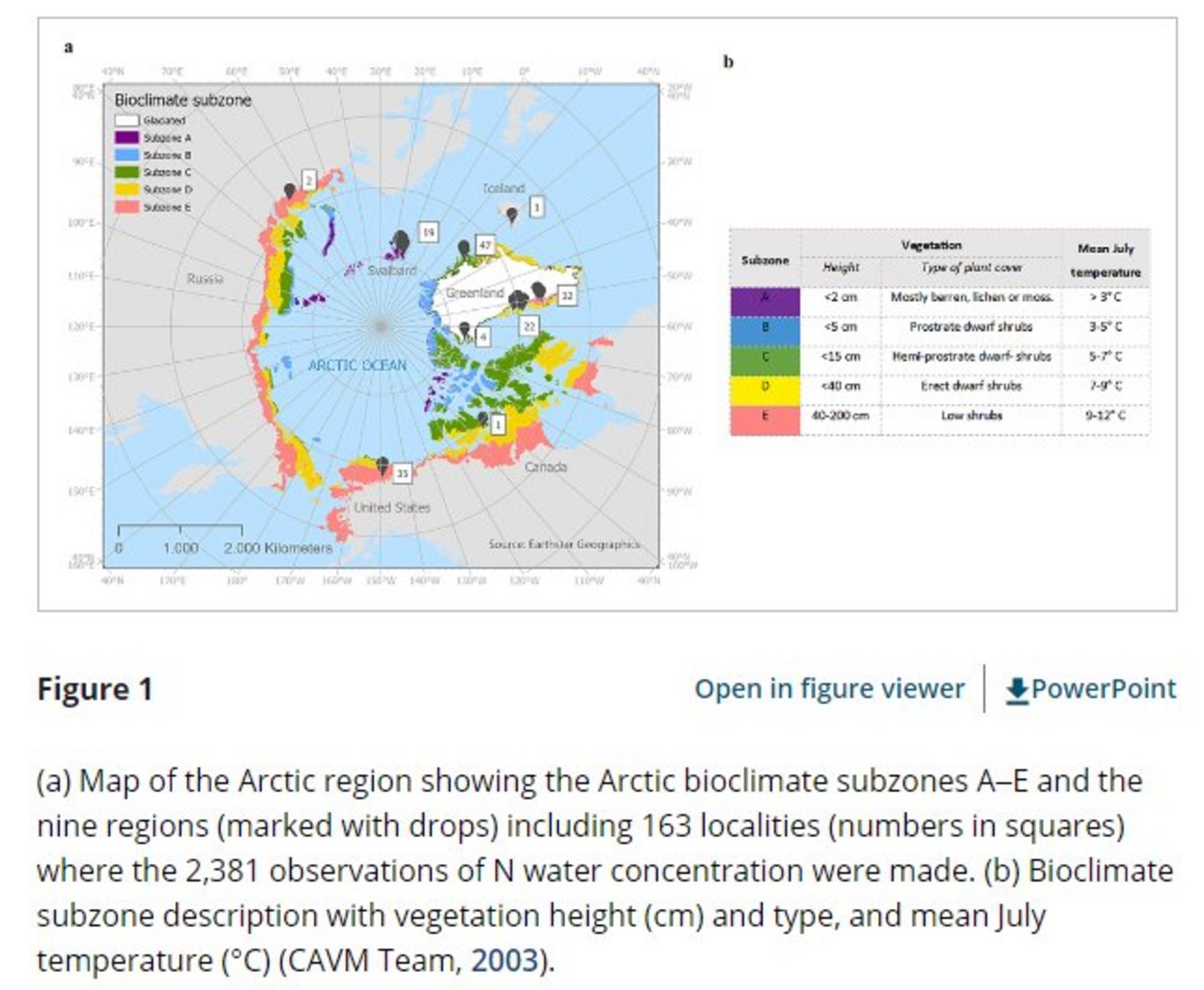Stream Nitrogen Concentrations Across Arctic Vegetation Gradients
New publication by CMH Holmboe, A Pastor, T Riis

Abstract:
The Arctic is experiencing dramatic climate-induced changes, which could have substantial consequences for nutrient export from land to streams and, thus, in-stream nutrient availability and composition. Arctic freshwater ecosystems are low-productive systems often limited by nitrogen (N) availability. Studying small streams is important due to their high abundance across the landscape, intimate connection to their catchments, high biogeochemical activity and high sensitivity to climate change. However, little information is available, especially in terms of N availability and composition (i.e., nitrate, ammonium, and dissolved organic nitrogen [DON]). We aimed to quantify N concentrations across small Arctic streams and explore the link between terrestrial vegetation and stream water N concentration. We conducted a literature study and extracted data from published articles, online databases, and unpublished field data. Out of 215 preselected articles, 20 met our criteria and contained 2,381 observations on stream water N concentrations in the Arctic. Data on DON was scarce: only 161 of the 2,381 observations contained DON data. We found that nitrate (NO3−), ammonium (NH4+) and DON ranged undetectable to 1,155, 547 and 1,587 μg N L−1, respectively. We found that sparsely vegetated areas had higher stream water N-concentrations, while barren areas and higher vegetated areas had lower stream water N-concentrations. This study provides fundamental knowledge on N availability in small streams across the Arctic, highlights data gaps and contributes to the basic knowledge needed for understanding and predicting future changes in N dynamics.
